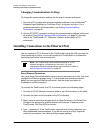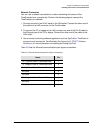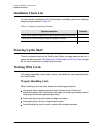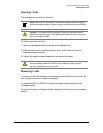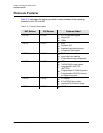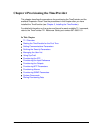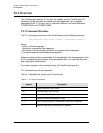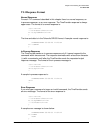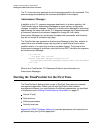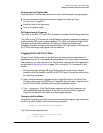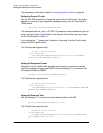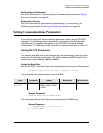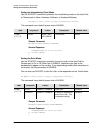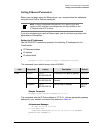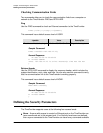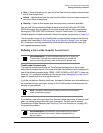
Chapter 4 Provisioning the TimeProvider
Starting the TimeProvider for the First Time
88 TimeProvider User’s Guide 097-58001-02 Revision G – April 2008
The TL1 command may generate an event message specific to the command. This
event message accompanies the command description in this chapter.
Autonomous Messages
In addition to the TL1 response messages described in the above sections, the
TimeProvider returns Autonomous Messages to report alarms, configuration
changes, or condition changes. Frequently, an Autonomous Message is returned at
approximately the same time as the TL1 response message that is associated with
a command, because the command happens to change the unit’s state.
Autonomous Messages are not directly correlated with commands, and therefore
they do not contain a correlation tag (ctag).
The TimeProvider can generate an Autonomous Message at any time, whether to
report that a user-initiated change has occurred, to report that an active alarm
condition exists, or to report that an alarm has been cleared. The format of the
Autonomous message is as follows; note that the text REPT identifies the response
as a Autonomous Message.
<cr><lf><lf>
sid date time <cr><lf>
almcde atag REPT reptype aidtype<cr><lf>
aid,aditype:ntfcncde,condtype,srveff,ocrdat,ocrtim:condscr
”<cr><lf>
;
Refer to the TimeProvider TL1 Reference Guide for more information on
Autonomous Messages.
Starting the TimeProvider for the First Time
The TimeProvider is delivered with a copy of SynCraft, Symmetricom’s network
management application. Before you can use SynCraft or other network
management software, you must provision the following parameters, as described
in this section and in Setting Communications Parameters, on page 91:
Source ID (sid)
Date and time
Ethernet parameters
Security-level user
Appendix B, CRAFT Software Reference, provides procedures and instructions to
get started using the SynCraft application.



